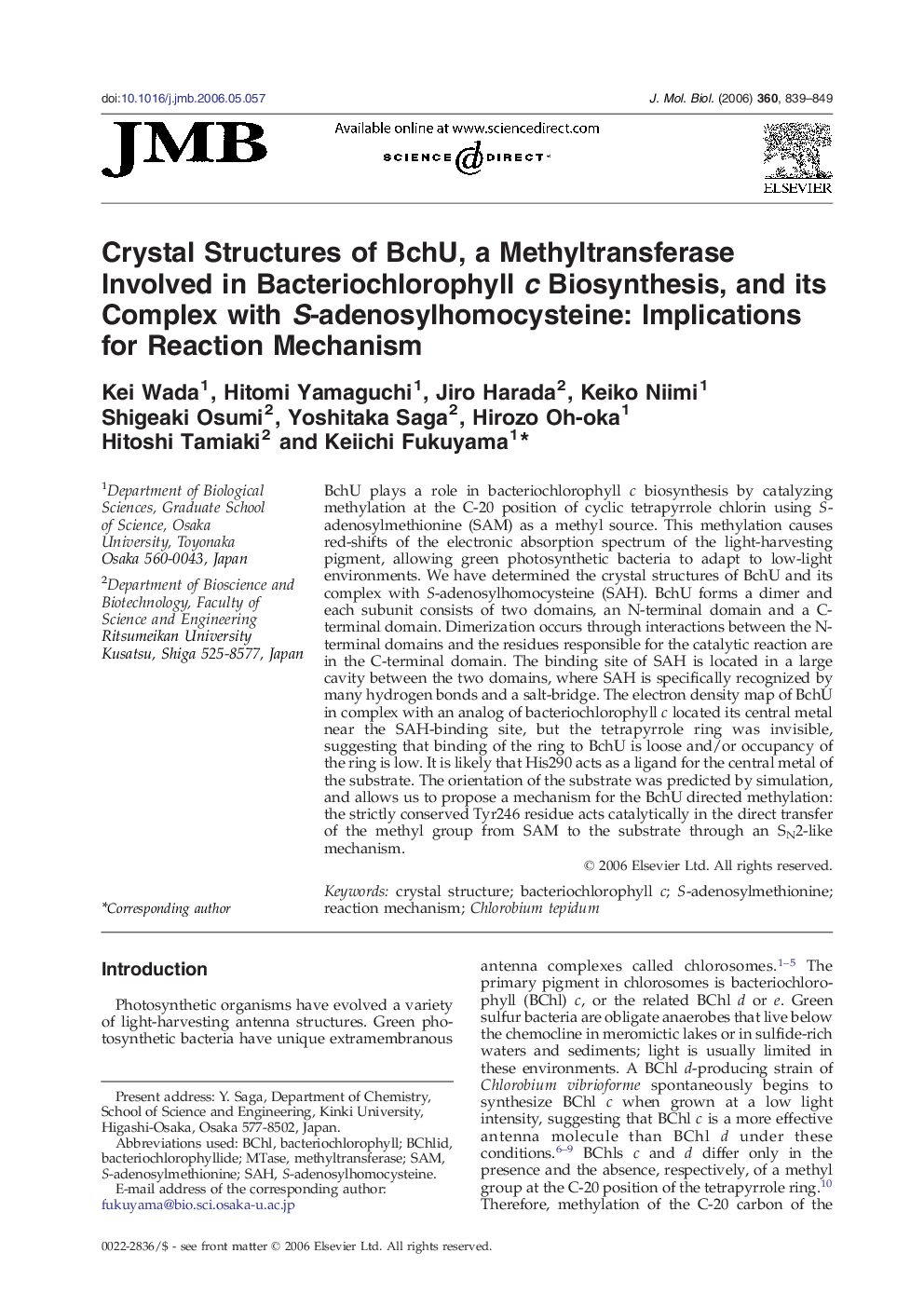| Article ID | Journal | Published Year | Pages | File Type |
|---|---|---|---|---|
| 2189462 | Journal of Molecular Biology | 2006 | 11 Pages |
BchU plays a role in bacteriochlorophyll c biosynthesis by catalyzing methylation at the C-20 position of cyclic tetrapyrrole chlorin using S-adenosylmethionine (SAM) as a methyl source. This methylation causes red-shifts of the electronic absorption spectrum of the light-harvesting pigment, allowing green photosynthetic bacteria to adapt to low-light environments. We have determined the crystal structures of BchU and its complex with S-adenosylhomocysteine (SAH). BchU forms a dimer and each subunit consists of two domains, an N-terminal domain and a C-terminal domain. Dimerization occurs through interactions between the N-terminal domains and the residues responsible for the catalytic reaction are in the C-terminal domain. The binding site of SAH is located in a large cavity between the two domains, where SAH is specifically recognized by many hydrogen bonds and a salt-bridge. The electron density map of BchU in complex with an analog of bacteriochlorophyll c located its central metal near the SAH-binding site, but the tetrapyrrole ring was invisible, suggesting that binding of the ring to BchU is loose and/or occupancy of the ring is low. It is likely that His290 acts as a ligand for the central metal of the substrate. The orientation of the substrate was predicted by simulation, and allows us to propose a mechanism for the BchU directed methylation: the strictly conserved Tyr246 residue acts catalytically in the direct transfer of the methyl group from SAM to the substrate through an SN2-like mechanism.
